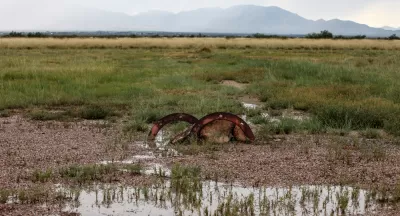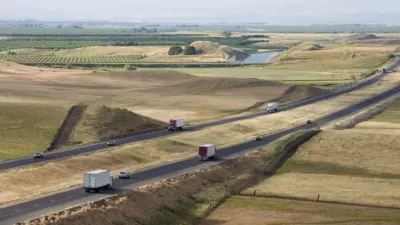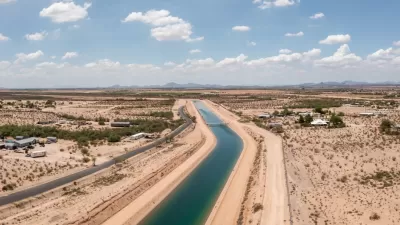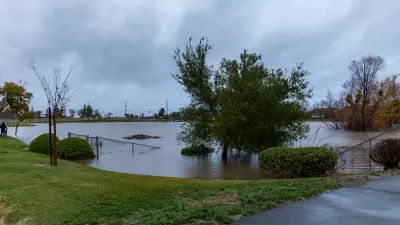For decades the arid state has required most new construction projects to demonstrate adequate water supply, but at the edge of the next dry spell, two lawmakers are trying to get rid of the rules.

In a sweeping piece that covers the history of groundwater management in Arizona, as well as the issues it will confront in the future, Dustin Gardiner of The Arizona Republic reports that in the current legislative session, Arizona's elected officials have been working on several bills that would begin to dismantle progressive planning and pumping regulations that have been in place for decades.
Most of the current regulations are rooted in the 1980 Groundwater Management Act, which is legislation that possibly enabled one of the nation's driest states to endure the most recent drought without catastrophe, and could be important as the state descends into the next dry spell. It mandates, among other things, that developers of new subdivisions in the state's most populous areas demonstrate that they have a 100-year water supply before beginning construction.
"The lawmakers have described their drive to let counties rescind the 100-year water supply rule—primarily Cochise County in southeastern Arizona —as a move to let local governments decide what’s best for themselves."
The problem, of course, is that groundwater is not a local issue, even according to the Arizona Supreme Court, which ruled in 1981 that aquifers are a shared public resource. Groundwater alone comprises 40 percent of water supply in Arizona, but as is true almost ;everywhere in the U.S., aquifers have been and are being drained faster than they can be replenished.
Once finished, the new bills may not pass the legislature, and even if they do, Governor Doug Ducey has previously vetoed legislation that would deregulate groundwater. But, Gardiner writes, "even if the bills fail, water-policy experts and environmentalists say the push for deregulation at the Capitol speaks to a broader problem," namely that the state seems willing to give up its mantle as a "role model" of groundwater management in the name of furthering development.
FULL STORY: Arizona's aquifers threatened; lawmakers push to cut groundwater rules

Study: Maui’s Plan to Convert Vacation Rentals to Long-Term Housing Could Cause Nearly $1 Billion Economic Loss
The plan would reduce visitor accommodation by 25% resulting in 1,900 jobs lost.

Alabama: Trump Terminates Settlements for Black Communities Harmed By Raw Sewage
Trump deemed the landmark civil rights agreement “illegal DEI and environmental justice policy.”

Why Should We Subsidize Public Transportation?
Many public transit agencies face financial stress due to rising costs, declining fare revenue, and declining subsidies. Transit advocates must provide a strong business case for increasing public transit funding.

Paris Bike Boom Leads to Steep Drop in Air Pollution
The French city’s air quality has improved dramatically in the past 20 years, coinciding with a growth in cycling.

Why Housing Costs More to Build in California Than in Texas
Hard costs like labor and materials combined with ‘soft’ costs such as permitting make building in the San Francisco Bay Area almost three times as costly as in Texas cities.

San Diego County Sees a Rise in Urban Coyotes
San Diego County experiences a rise in urban coyotes, as sightings become prevalent throughout its urban neighbourhoods and surrounding areas.
Urban Design for Planners 1: Software Tools
This six-course series explores essential urban design concepts using open source software and equips planners with the tools they need to participate fully in the urban design process.
Planning for Universal Design
Learn the tools for implementing Universal Design in planning regulations.
Smith Gee Studio
Alamo Area Metropolitan Planning Organization
City of Santa Clarita
Institute for Housing and Urban Development Studies (IHS)
City of Grandview
Harvard GSD Executive Education
Toledo-Lucas County Plan Commissions
Salt Lake City
NYU Wagner Graduate School of Public Service





























